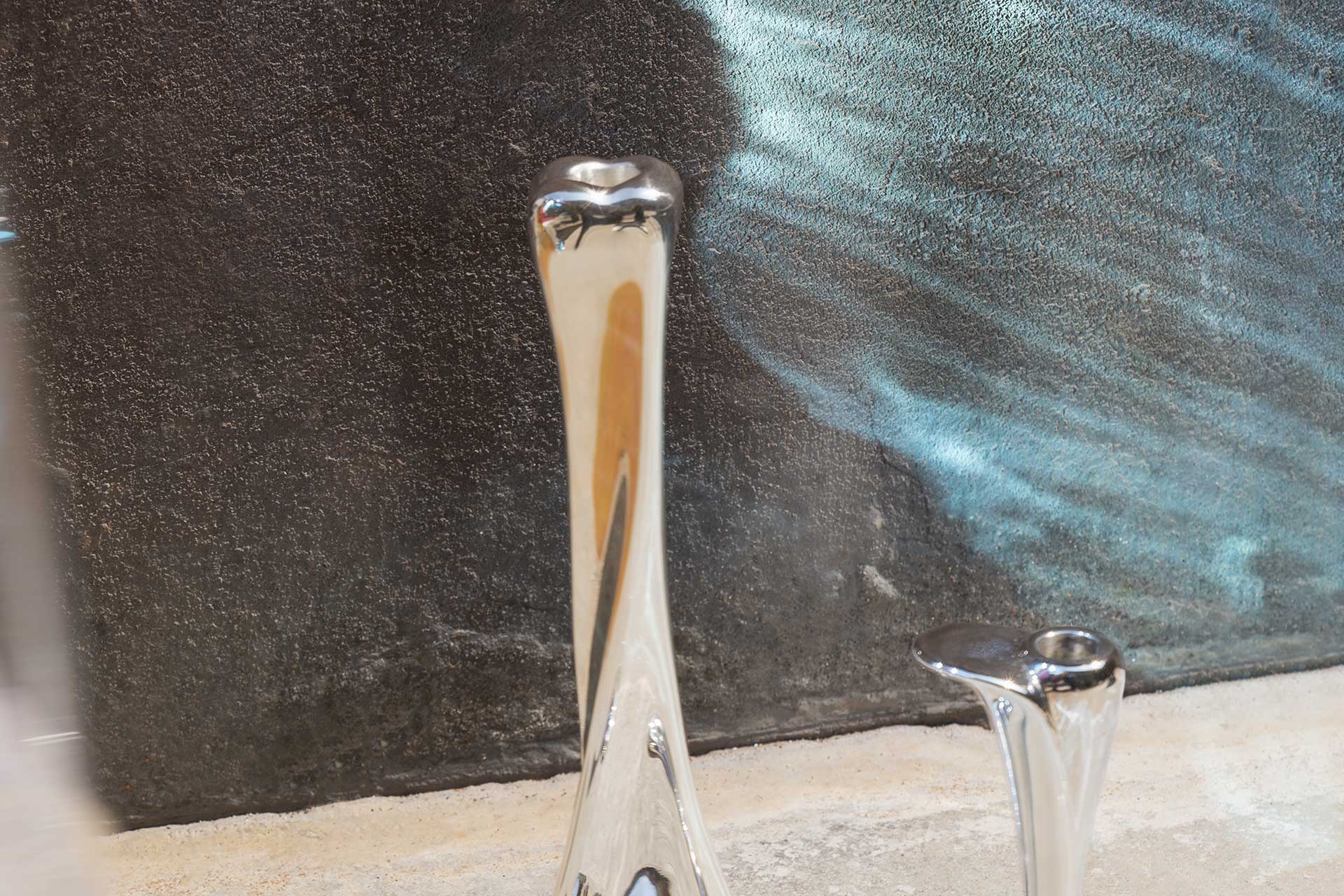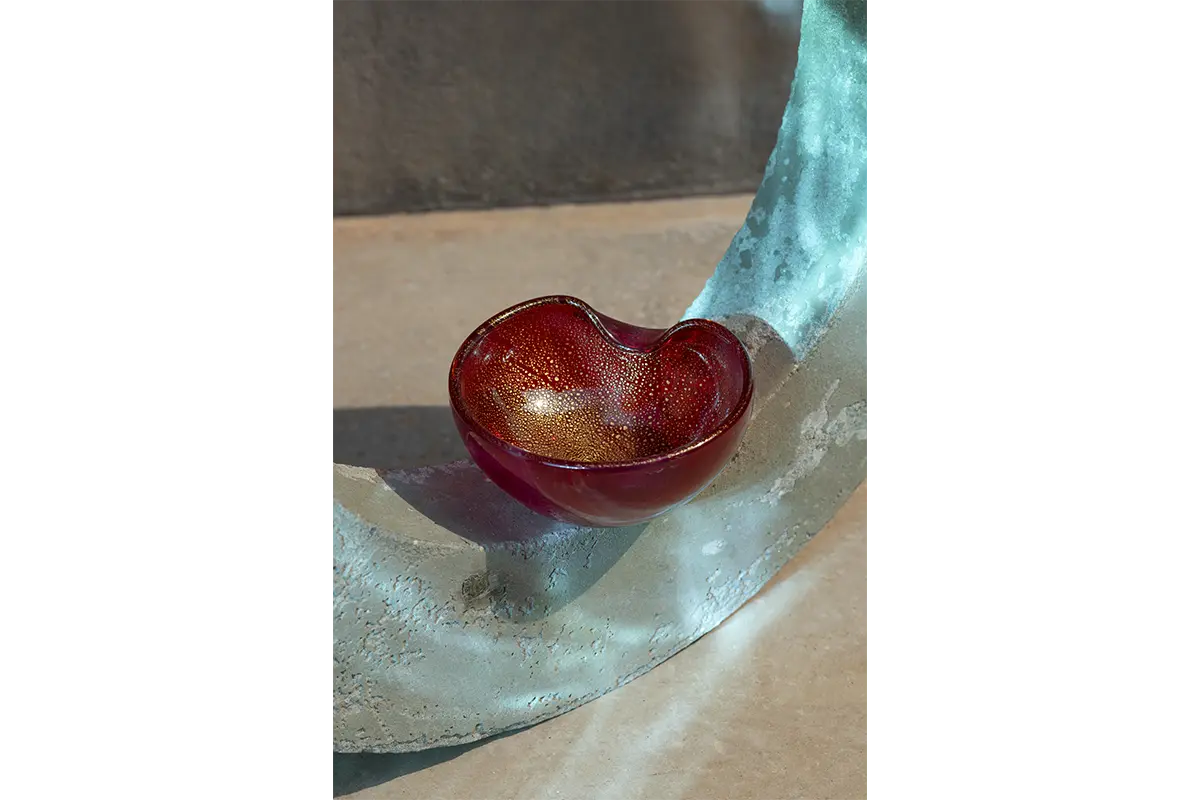From Florence to New York, from fashion model to female artisan Elsa Peretti’s lived an existence of freedom, inspiring the accessibility of her design and creations bought by women, for themselves
Remembering Elsa Peretti: A Life of Design, Modeling, and Philanthropy
A career in jewelry design, fashion modeling, and philanthropy, plus pieces designed for Tiffany & Co. and international exhibitions, at museums such as the Metropolitan Museum in New York and the British Museum in London. These accomplishments just scratch the surface of Elsa Peretti’s life. She was eighty-one when, in March of 2021, she passed away in San Marti Vell: a small Catalan village near Barcelona. It’s the place where Peretti bought her first home in 1968, which later became her workshop, refuge, and the epicenter of her creative uni- verse. There, she continued to create for Tiffany & Co. – she had been a jewelry and object designer since 1974, and in 2012 her contract had been renewed for two more decades.
The Life and Legacy of Jewelry Designer Elsa Peretti
Peretti’s story starts in Florence, on 1st May 1940, where she was born to an upper-class family; her father being the founder of a large Italian oil company, Anonima Petroli Italiana (API). Freeing herself from the shackles of conservatism, which led her to be estranged from her family for most of her life, she studied in Rome and in Switzerland. Before starting her career, she worked as a French tutor and a ski instructor in the Swiss mountain village of Gstaad.
After pursuing a degree in interior design and working for Milanese architect Dado Torrigiani, in 1964 she made her way to Barcelona, where she started her modeling career, feeling a sense of independence and ease. Four years later, she moved to New York – having been noticed by Diana Vreeland – where she signed a contract with Wilhelmina Modeling Agency and found success through her seamless integration into the social circles of the time. The following year, she started designing jewelry for her friend Giorgio di Sant’Angelo, and as her popularity increased, her allure attracted the interest of Charles James and of the experimental catwalk of Issey Miyake.
Elsa Peretti: From Halstonette to Jewelry Designer for Tiffany & Co
In the early 1970’s, her modeling career led her to become one of Halston’s so-called ‘Halstonettes’. Although she wasn’t particularly fond of the modelling profession, it created an opening for her talents, and Peretti’s relationship with Roy Halston Frowick – which was both a professional and personal one – had an impact on her life. She started designing jewelry and later perfume bottles for him in 1971, the same year she won a Coty Award in the area, a recognition which would be succeeded by many more throughout her life. Peretti’s partnership with Tiffany & Co. kicked off in 1974, when Halston introduced her to the brand’s top brass, who consequently hired her, leading to Peretti creating lines of designs which grew to represent ten percent of Tiffany & Co.’s net sales between 2009 and 2011.
Elsa Peretti: From Studio 54 to Sant Marti Vell, the Jewelry Designer’s Journey
Becoming more accustomed to the Seventies New York scene, Peretti would spend her days and nights with other personalities of the era including Liza Minnelli, Victor Hugo, Bianca Jagger and Andy Warhol, dancing until sunrise at the city’s endless nightlife offerings, from Studio 54 to the Paradise Garage. Her picture, featuring a Playboy Bunny costume designed by Halston himself that she wore on Halloween of 1975, was captured by Helmut Newton and became one of the most noteworthy images of the decade. When the Eighties rolled around, it brought with it transgression, disco music, glitter, glamour and cocaine, along with the explosion of the AIDS epidemic which took the lives of many of the actors on the Big Apple scene. ‘
I felt that everything was done here. A radical change was needed to find a different creative and spiritual nourishment’. The mustard-yellow house in the seventeenth-century Spanish village of Sant Marti Vell, which she had purchased in 1968 and had restored, became her preferred home – a refuge from the dizzying city that never sleeps. Inspired by the flora and fauna that surrounded her, Sant Marti Vell was where she created her iconic pieces and led an unhurried and happy life.
Spain – the place where Peretti created her first design
Working with a local silversmith in 1969 to make a bud vase out of sterling silver as a necklace pendant, fascinated by the lunar and reflective texture of the metal, silver continued to be her material of choice during her time designing for Tiffany & Co. A material which Tiffany & Co. had edited out of their catalogue in the Thirties and was brought back by Peretti herself.
Her designs revolutionized the way jewelry was viewed, not only due to her organic and sculptural aesthetic and biomorphic simplicity, but also due to her democratization of the industry with the very choice of her materials. Peretti designed for the working-class woman, working to free her creations from the shackles of becoming status symbols, and instead aiming for a sophisticated accessibility to broaden the audience of jewelry. At a time where women had to be married or have a man cosign for them in order to get a credit card, Peretti’s choice of a cheaper material like silver meant that women were buying jewelry for themselves instead of having a man gift them with it.
The Nature-Inspired Jewelry of Elsa Peretti at Tiffany & Co
Throughout her time working with Tiffany & Co., nature was a constant reference and her pieces for Tiffany borrow a lot from it. The Bone Cuff piece, 1970, which bridged the gap between costume and serious jewelry, is an example of graphic stereometry and human bones, which she developed as a child visiting the Capuchin crypt in Rome and seeing the bones of the monks. The Bottle, Scorpion, and Mesh Jewelry collections, and her use of the hypnotic elegance of snakes, timeless archetypes and resonances of classicism mixed with spatial geometry. Her work also welcomed inspiration from her background in interior design and echoes from Antoni Gaudi’s organic architecture, along with contemporary art and artists such as Henry Moore, who she cited as an inspiration for her Open Heart collection of pendant jewelry.
The Diverse Design World of Elsa Peretti: From Jewelry to Interiors and Beyond
Apart from her signature use of silver, she also brought some jade, lacquer, and rattan into play. After establishing a strong following with her jewelry, her repertoire grew to include interiors and object design for Tiffany & Co. In the early Eighties, she started to expand her expertise to porcelain, crystals, and silverware, although the center of her work remained jewelry. Peretti’s designs were sold at a wide range of price points, with one version of her Diamonds by the Yard necklace being sold for 400 US dollars, while another was priced at 75,000 US dollars, with the variations being partly dependent on the materials used. Her designs for Tiffany & Co. were also on the big screen, with the Bone Cuff making cameos in films like Sex and the City, 2008, and Wonder Woman 1984, 2020.
Celebrating Elsa Peretti: The Timelessness of Her Designs and Legacy
Peretti’s Bone Bracelet was celebrated on the occasion of its fiftieth anniversary – and of Peretti’s eightieth birthday – with a Special Edition collection. Made available in May 2020, the collection featured new shades of color; red, blue, green and versions with semi-precious stones. The bracelet embraces Peretti’s design approach, inspired by feminine energy and nature and adhering perfectly to the morphology of the wrist with separate bracelets made for the left and right hands, which can be worn in pairs to make the anatomical shape. This is just one of the many design legacies Peretti has left for the Maison, which remain as modern today as ever. The timelessness of her designs were heightened by the inspiration she drew from the natural world, and her insistence to design whenever inspiration struck, not bound by any calendar.
Peretti preferred to define herself as an artisan, with a stress on craftsmanship
She also embraced the inspiration from nature and recognized the importance of touch. ‘I took inspiration from tactile things and sensations, perhaps because I don’t see well. Good design takes no effort to look at. Even in collaborations, the dogma of craftsmanship prevailed. Vases and glass objects designed by Elsa Peretti were handmade by the Vetreria Artistica Archimede Seguso – the historian Giuseppe Cappa described Seguso as ‘the walking encyclopaedia of glass working’ (Tiffany and the historic Murano glassworks have been working together for over sixty years).
Upon the passing of her father in 1977, from whom she had been alienated throughout her life due to her family’s conservative beliefs, she inherited a fortune that she dedicated to humanitarian purposes. In 2000, she launched a foundation in her father’s name, which in 2015, became known as the Ferdinando and Elsa Peretti Foundation. Dedicating herself to cultural and scientific research projects, along with humanitarian philanthropy through the foundation, Peretti led programs aimed at defending the rights of ethnic minorities. On the occasion of her birthday, she recounted a Decalogue of her thoughts on the present and future of mankind, specifically with relation to nature, foreseeing social interventions in healthcare, economic inequality, and homelessness in Italy.
Elsa Peretti
Italian designer and philanthropist. She designed several pieces of jewelry for Tiffany & Co. that are included in the 20th century collection of the British Museum, the Museum of Fine Arts, Boston, and the Museum of Fine Arts, Houston. In 1974, Peretti, modeled for Halston, Helmut Newton and Francesco Scavullo, came to Tiffany with her modern jewelry pieces. John Lorning’s book, Tiffany Style – 170 Years of Design, devoted 18 pages of images of her jewelry. She was largely responsible for the restoration of the village of Sant Martí Vell in Catalonia. Through her foundations, she supported a wide variety of cultural, social and artistic causes.




















